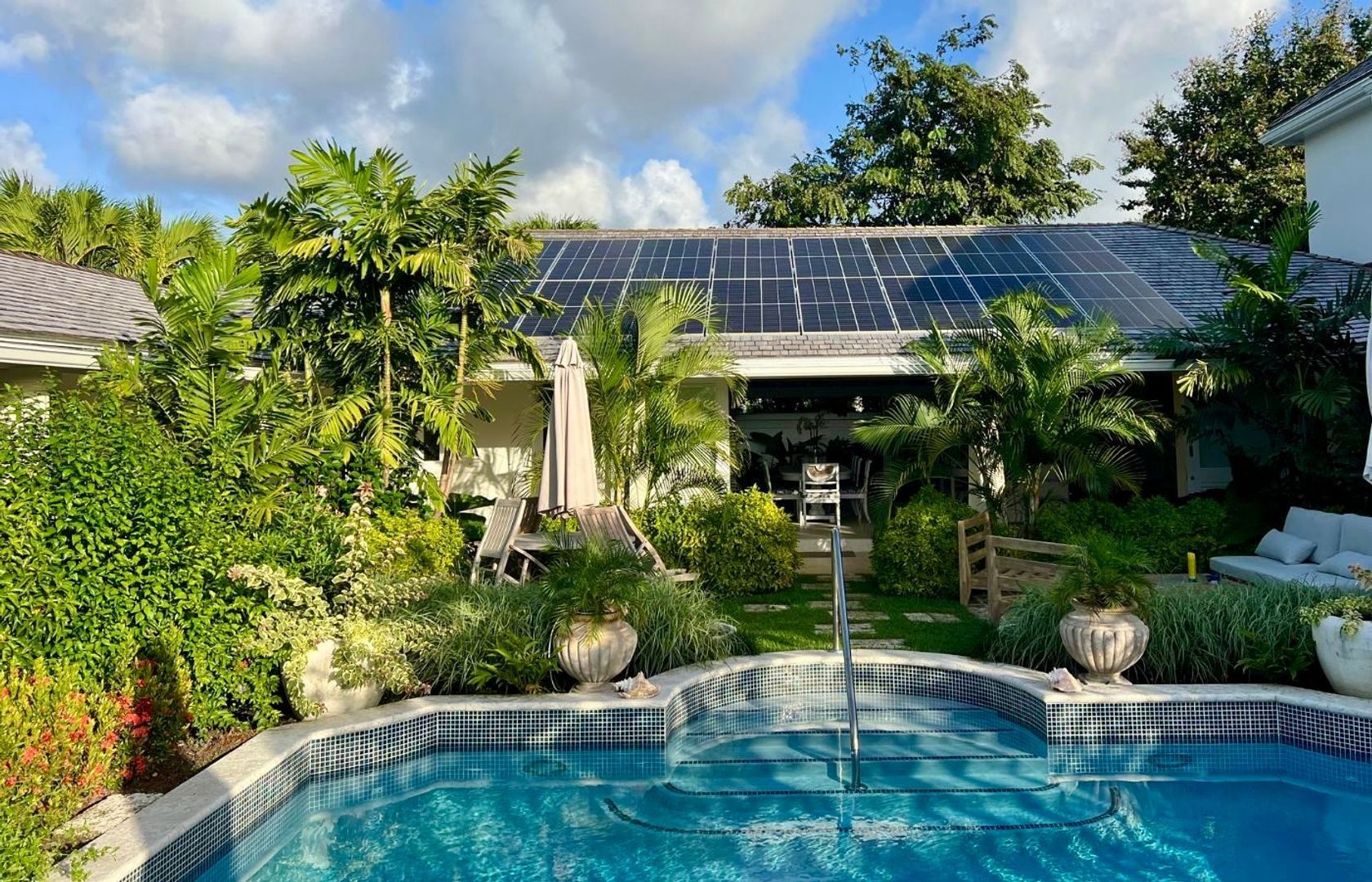Sustainable Living on Curacao

Building with a Vision for the Future
At Wigbold Real Estate, we observe a clear shift in how residents and developers on Curaçao approach homebuilding. Sustainability has moved from being a niche consideration to a central element of modern living – not only as a way to reduce costs, but as a commitment to responsible use of energy, water, and natural resources. Sustainable living in Curaçao has become a defining theme in the island’s property market.
Solar Panels in Curaçao – Why They Almost Always Pay Off
With approximately 3,200 hours of sunshine each year, Curaçao ranks among the sunniest locations in the Caribbean. This makes the island ideal for solar energy generation. Combined with the current feed-in tariff of 0.25 Netherlands Antillean guilder per kilowatt-hour, solar panels in Curaçao remain a financially sound investment.
Studies indicate that the average payback period for solar systems ranges between seven and nine years, depending on system size and household consumption. For many homeowners, the investment pays off over time – especially as energy costs continue to rise. Beyond the financial return, solar panels directly reduce carbon emissions and enhance the island’s energy independence.
In new developments, solar energy is increasingly integrated from the design phase onward. Existing homes are also seeing a growing number of small-scale systems tailored to daily consumption. Solar installations have therefore become one of the most tangible expressions of sustainable living in Curaçao.
Building Sustainably in the Tropics – Materials and Design Principles
Curaçao’s tropical climate places specific demands on residential construction. Heat, salt air, and strong sunlight call for durable, low-maintenance materials. Concrete and natural stone remain widely used for their resilience, but there is growing interest in innovative building methods that improve insulation and energy efficiency.
A key design principle for tropical sustainability is natural ventilation. By orienting homes toward prevailing winds and employing open floor plans, residents can benefit from consistent airflow without relying heavily on air conditioning. Large roof overhangs, shaded terraces, and light-colored finishes help maintain cooler indoor temperatures.
Recent research shows that these architectural strategies are increasingly being applied in residential design across the island. The result is not only a more comfortable indoor climate, but also lower energy demand – an essential part of eco living in Curaçao.
Water Efficiency and Energy-Smart Solutions
Water is a valuable resource on Curaçao, and sustainable living also means managing it wisely. Rainwater harvesting systems are becoming more common, especially in new builds. With a roof area of about 150 square meters, a household can collect up to 90 cubic meters of rainwater per year – sufficient for irrigation or non-potable domestic use when properly filtered.
Greywater recycling and energy-efficient appliances are likewise gaining ground in modern homes. Features such as LED lighting, solar-control glass, and well-insulated roofs further reduce energy demand. Even modest design adjustments can generate significant long-term savings and environmental benefits.
Toward a Sustainable Living Culture in Curaçao
Sustainable living in Curaçao is not a passing trend – it is a vital shift toward a resilient, future-proof island. At Wigbold Real Estate, we view it as a shared responsibility among residents, architects, and developers to create energy-efficient, comfortable, and climate-conscious living environments.
Whether through solar energy, natural ventilation, or rainwater harvesting, each initiative contributes to a more sustainable Curaçao. By building and living with awareness, we collectively invest in the island’s future.


